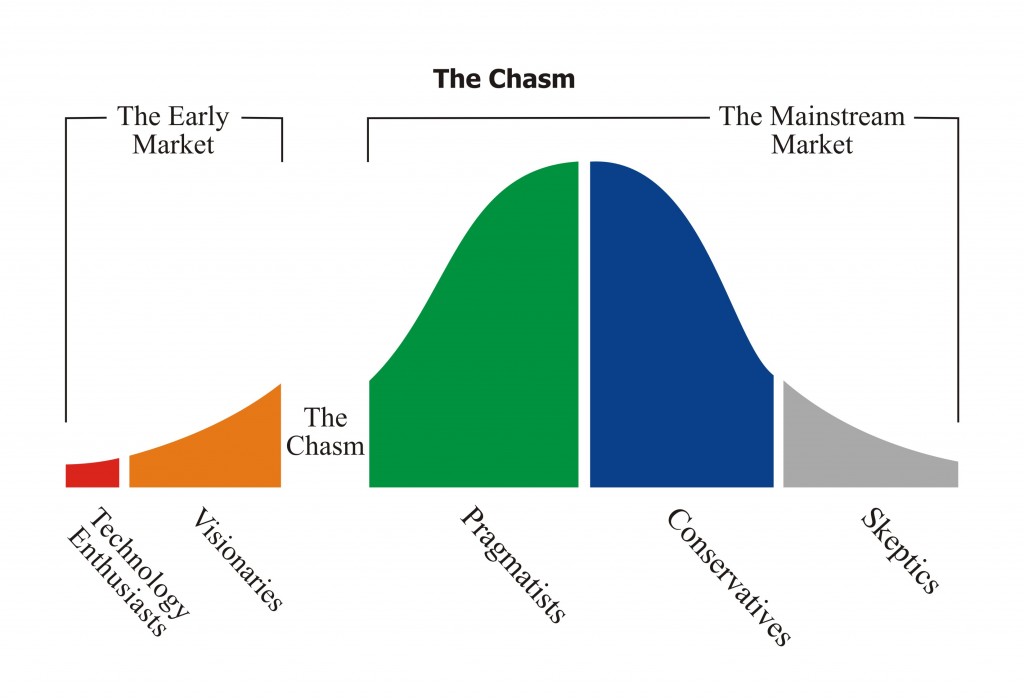What is an Ideal Customer Profile?
The Ideal Customer Profile is one of the important concepts in all sales and marketing activities.
At TBK Consult we define the Ideal Customer Profile as:
The Ideal Customer Profile is a description of the type of customer who has proven to derive most value from using our product or service relative to the effort it takes us to complete the sale.
Our definition differs substantially from the “standard” definition in so far as the wording does not encompass concerns regarding budgets or active needs [1]. The TBK language seeks out the “objective” criteria, which make it possible to identify new customers, based on recognizing characteristics shared with those of our current customers, who derive the most value from our product or services.
If your answer to the question: “what is your ideal customer profile?” is that all customers are ideal, and that your product/service can be used by consumers, across all industries and all sizes of companies, then you may need to reconsider your market focus. Unless you are already an established brand and have a very big marketing muscle, then you must focus. This post is suggesting some guidelines for the definition of your Ideal Customers Profile.
The post is written for B2B software companies with solutions, which requires sales people getting in front of potential customers. It is also primarily targeting the software company which is engaged in bootstrapping and/or building a bridgehead.
The Ideal Customer Profile is used as the basis for defining our target audience:
- Marketing messages are created for potential clients that fit within the parameters of the Ideal Customer Profile.
- Sales acquisition activities are based on lists of companies matching the Ideal Customer Profile.
The Ideal Customer Profile is a by-product of the definition of the Customer Value Proposition.
Cost of sales
We cannot ignore the cost of sales. Even though the larger enterprise customers would potentially derive dramatic value from our solution, the sales process may be too lengthy and too costly to achieve short-term revenue objectives. In addition, dealing with the political decision making systems at large corporations are a well-known nightmare for smaller suppliers. However, selling to small businesses may not be cost effective.
The 3 sets of profile criteria
The properties of the Ideal Customer Profile are divided into 3 sets of criteria:
Demographic properties are available in most prospect databases:
- # of employees
- Annual revenue
- Industry
- Distance from you nearest sales/support representation
- International representation
- Location of headquarters
- Ownership
- Etc.
Sociographic properties are seldom available in commercially available databases:
- Current solution environment (for example SAP, Microsoft, Info etc.)
- Age of current solution
- Expansion plans
- Decision making structure
- Decision making process
- Characteristics of problem areas
- Etc.
Psychographics properties are related to the potential clients value and attitudes[2], such as:
- Ambition
- Resistance to change
- Openness to new technology
- Quality Awareness
- Cooperative spirit
- Etc.
Crossing the Chasm
Although defining the Ideal Customer Profile is crucial to any marketing and sales activity it is particularly critical for new companies bringing solutions to the market and for established companies with successful solutions entering new international markets.
The reason is simple. When acquiring solutions from new companies and especially when acquiring new solutions the vast majority of your potential customers will look at your installed base. They seek comfort in the fact that there are already others with the same characteristics that have acquired the solution and are happy with it. This is called “risk mitigation” and is a fundamental to the decision-making process
“Crossing the Chasm” deals with the challenge of bringing disruptive technology to the market. The principle, however also applies to companies moving into markets where they are not yet known or established. Even though their technology is well tested and proven, customers in a new geography will be skeptical and reluctant to be the first to take them on. Companies who have been very careful with targeting well-defined “Ideal Customers” will have a much easier time entering new markets. By leveraging relationships and experiences with the same segment in the new territory the threshold of resistance will be much lower.
[1] The standard definition talks about a customer who wants your product, a customer who has the ability to pay for your product and a customer who has the authority to purchase your product. As TBK is consulting with companies who sell high price technology solutions into a complex sales situation, the standard definition is not applicable.
[2] Please note that companies do not have values and attitudes, people have. You need to identify the decision centers and map the Psychographics properties of the people involved with the purchase of your solution.










